Did you know that shallot onions offer a higher concentration of protein, fiber, and micronutrients compared to common onions? These small, elongated onions belong to the Allium family, alongside other onion varieties, and offer a subtle mix of flavors between a traditional onion and garlic. But it’s not just their unique taste that makes them special – shallots are packed with nutrients and plant compounds that provide numerous health benefits.
Key Takeaways:
- Shallot onions have a higher concentration of protein, fiber, and micronutrients compared to common onions.
- They belong to the Allium family and offer a subtle mix of flavors between a traditional onion and garlic.
- Shallots are packed with nutrients and plant compounds that provide numerous health benefits.
- They are rich in antioxidants and organosulfur compounds, such as allicin, which contribute to their health benefits.
- Shallot onions are versatile in cooking and can add a mild and subtle flavor to various dishes.
Shallots vs Onions: What’s the Difference?
When it comes to shallots and onions, they may belong to the same Allium family, but they have distinct differences in taste, appearance, and nutritional composition.
Shallots offer a milder, sweeter flavor compared to the more robust taste of onions. Their delicate and nuanced flavor makes them a favorite among chefs, especially in gourmet cooking.
Visually, onions are round and bulb-shaped, while shallots are smaller, elongated, and grow in clusters. Shallots also have a firmer texture and contain less water compared to onions.
If you find yourself in need of a shallot onion substitute, a common onion can do the trick. Simply add a pinch of garlic to mimic the subtle flavors of shallots. However, keep in mind that while the substitution will work, it may alter the overall taste profile of your dish, as shallots bring their unique delicate taste.
Shallots offer a milder, sweeter flavor compared to onions, with a subtle mix of flavors between a traditional onion and garlic.
So whether you’re looking for a more delicate taste or need an alternative for shallots in your recipes, understanding the difference between shallots and onions is essential for achieving the desired flavors in your culinary creations.
| Shallots | Onions |
|---|---|
| Milder, sweeter flavor | Robust taste |
| Smaller, elongated, and grow in clusters | Round and bulb-shaped |
| Firmer texture | Contain more water |
| Less commonly used as a standalone vegetable | Widely used in various cuisines and recipes |
While both shallots and onions have their distinct characteristics, they each bring their unique flavors and benefits to the kitchen.
Shallot Onion Substitutes
If you don’t have shallots on hand, you can easily substitute them with common onions. However, keep in mind that the flavor will differ as shallots offer a more delicate taste compared to onions. To mimic the subtle flavors of shallots, you can add a pinch of garlic to your dish.
- Substitute shallots with common onions
- Add a pinch of garlic for a closer flavor profile
Experimenting with different ratios and combinations of onions and garlic can help you find the perfect substitute for shallots in your recipes.
Shallot Onion Nutrition and Health Benefits
Shallots, apart from their delicious taste, are packed with essential nutrients that offer numerous health benefits. Let’s explore the nutritional value and the various ways in which shallots can contribute to your overall well-being.
Nutritional Value of Shallots
Shallots are a rich source of important nutrients that support your body’s functions. They contain a range of vitamins, including vitamin B6 and folate, which are essential for metabolism and red blood cell production. Shallots also provide minerals such as manganese, copper, potassium, iron, and magnesium, which play vital roles in various physiological processes.
| Nutrient | Amount per 100g |
|---|---|
| Protein | 2.5g |
| Fiber | 2g |
| Vitamin B6 | 0.18mg |
| Folate | 34μg |
| Manganese | 9.2mg |
| Copper | 0.2mg |
| Potassium | 334mg |
| Iron | 1.2mg |
| Magnesium | 21mg |
Health Benefits of Shallots
Shallots are not only low in calories but also offer a range of health benefits. They are rich in antioxidants, including quercetin, kaempferol, and allicin. These compounds help protect your cells from oxidative stress, fight inflammation, and reduce the risk of chronic diseases like cancer, heart disease, and diabetes.
Furthermore, the organosulfur compounds found in shallots have antimicrobial properties, potentially supporting heart health, improving blood sugar control, and aiding in weight management.
Shallots are a powerhouse of nutrients and antioxidants, making them a valuable addition to your diet. Their health-promoting properties can help protect against chronic diseases and support overall well-being.
To fully appreciate the health benefits of shallots, try incorporating them into your favorite recipes or experiment with new dishes. Their unique flavor and nutritional value make them a tasty and nutritious choice.
References
- USDA FoodData Central. “Shallots, raw”. https://fdc.nal.usda.gov/fdc-app.html#/food-details/1101137/nutrients.
Shallot Onion Uses in Cooking
Shallots are a versatile ingredient in cooking, adding a mild and subtle flavor to a wide range of dishes. Whether you’re looking to enhance a salad dressing, stir-fry, or pasta dish, shallots can elevate your culinary creations with their delicate taste. Here are some popular ways to incorporate shallots into your cooking:
- Chopped or Diced: Shallots can be finely chopped or diced and used as a flavor base in sauces, dressings, and marinades. Their smaller size and milder taste make them perfect for adding a touch of sophistication to your recipes.
- Sautéed or Caramelized: Sautéed or caramelized shallots bring out their natural sweetness and create a rich, savory flavor. They can be the star of the show in dishes like French onion soup or serve as a flavorful topping for steaks and burgers.
- Roasted or Grilled: Roasting or grilling shallots brings out their rich, earthy flavors and adds depth to dishes. You can roast them alongside vegetables or meat, or grill them and enjoy their smoky, sweet taste.
- Pickled: Pickled shallots provide a tangy and slightly sweet flavor that can enhance salads, sandwiches, and appetizers. They add a delightful crunch and a burst of acidity to your dishes.
Shallots can also be minced and sprinkled on top of pizzas, folded into omelets, or used as a garnish for soups, quiches, and more. Their versatility allows you to experiment and get creative in the kitchen, adding a touch of elegance to your favorite recipes.
“Shallots are like the secret weapon of flavor in cooking. They bring a subtle yet exquisite taste that elevates any dish.”
– Celebrity chef, Gordon Ramsay
Recipe Inspiration: Shallot Onion Vinaigrette
One delicious way to showcase the flavor of shallots is by making a shallot onion vinaigrette. This tangy dressing adds a burst of freshness to salads, roasted vegetables, and grilled meats. Here’s a simple recipe to try:
| Ingredients: | Instructions: |
|---|---|
|
|
Enjoy the delightful combination of tangy vinegar, shallots’ subtle sweetness, and the richness of extra-virgin olive oil in this easy-to-make vinaigrette.
Growing Shallot Onions: Tips and Tricks
When it comes to growing shallot onions, a little knowledge goes a long way. Here are some tips and tricks to help you cultivate these flavorful gems in your own garden:
- Choose the right time: Shallots are typically planted in the fall or early spring, depending on your climate. Consult your local gardening resources for the best planting time in your area.
- Prepare the soil: Shallot bulbs thrive in well-drained soil. Make sure to remove any rocks or debris from the planting area and amend the soil with organic matter to improve its quality.
- Planting and spacing: Plant shallot bulbs about 6 inches apart, with the pointed end facing upwards. This spacing allows each bulb to have enough room to develop into a full-sized shallot.
- Maintain moisture: Shallots require regular watering, especially during dry spells. Keep the soil evenly moist but not waterlogged to prevent rotting. Mulching can also help conserve moisture and suppress weeds.
- Feed your shallots: Fertilize your shallot plants with a balanced organic fertilizer to provide them with the necessary nutrients for healthy growth. Follow the instructions on the fertilizer package for the appropriate application rate.
- Harvesting: Shallots are typically ready to harvest when the tops have withered and dried. Gently lift the bulbs using a garden fork or trowel, being careful not to bruise or damage them. Allow them to dry in a well-ventilated area before storing.
- Proper storage: To maintain the freshness and flavor of your harvested shallots, store them in a cool, dark, and well-ventilated space. You can use a mesh bag or a wooden crate to allow for proper airflow. Avoid storing them near potatoes, as they can cause each other to spoil faster.
By following these tips and tricks, you’ll be well on your way to growing your own delicious shallot onions right in your backyard. Enjoy the satisfaction of harvesting and using these flavorful bulbs in your favorite recipes!
Shallot Onion Substitute Suggestions
If shallots are not available, there are substitutes for their unique flavor. A common onion mixed with a pinch of minced or dried garlic can be used as a substitute. However, it’s important to note that shallots and onions provide different flavors, and the substitution works best for cooked shallots. When substituting shallots for one whole onion, it is generally recommended to use three shallots instead. Understanding the differences in flavor and substituting accordingly can help achieve the desired taste in recipes.
Shallot Onion: A Brief Overview
Shallots and onions, both members of the Allium family, offer distinct flavors and characteristics in the culinary world.
Shallots are smaller, elongated, and grow in clusters, while onions are round and bulbous. This unique shape and growth pattern give shallots a more delicate appearance.
When it comes to taste, shallots have a milder, sweeter flavor compared to the stronger and more pungent taste of onions. This subtle flavor makes shallots suitable for delicate dishes where you want to add depth without overpowering the other ingredients.
In terms of nutrients, shallots contain a higher concentration of certain vitamins and minerals compared to onions. They are rich in vitamin B6, vitamin C, folate, potassium, manganese, copper, iron, and magnesium. These nutrient-packed bulbs offer a nutritional boost to your meals.
Shallot Onion Comparison
| Shallots | Onions |
|---|---|
| Smaller and elongated | Round and bulbous |
| Milder, sweeter flavor | Stronger, pungent flavor |
| Higher concentration of certain vitamins and minerals | Lower concentration of certain vitamins and minerals |
Understanding the differences between shallots and onions allows you to make informed choices when it comes to specific culinary preparations. Whether you prefer the subtle sweetness of shallots or the bold flavor of onions, both can add depth and complexity to your dishes.
Shallot Onion Storage Tips
Proper storage methods are essential to maintain the freshness and flavor of shallots and onions. It’s important to store them in appropriate conditions to extend their shelf life and preserve their quality.
Storing Shallots:
When it comes to shallots, consider the following storage tips:
- Choose a cool and dark location: Shallots should be stored in a cool and dark area, such as a pantry or cellar. This helps prevent sprouting and maintains their flavor.
- Avoid exposure to moisture: Moisture can cause shallots to rot. Store them in a dry environment to maintain their freshness.
- Provide proper ventilation: Shallots need airflow to stay fresh. Keep them in a mesh or woven bag that allows air circulation, rather than sealing them in plastic.
Storing Onions:
For onions, follow these storage guidelines:
- Find a cool and dry place: Onions should be stored in a cool and dry location, away from direct sunlight. A pantry or cellar is ideal.
- Avoid contact with potatoes: Onions and potatoes should be stored separately. When stored together, they release gases that can cause spoilage.
- Prevent bruising: Handle onions with care to avoid bruising, as this can lead to decay. Discard any onions with signs of damage.
By following these storage tips, you can maximize the shelf life and quality of your shallots and onions, ensuring that they are ready to enhance your culinary creations.
Health Benefits of Shallot Onions
Shallot onions possess a myriad of health benefits due to their high antioxidant content, which aids in protecting our cells from oxidative stress and inflammation. These antioxidants play a crucial role in reducing the risk of cancer, improving heart health, providing potential allergy relief, and exhibiting antimicrobial effects.
One significant advantage of shallot onions lies in their potential to support brain health. The folate content in shallots enhances brain functioning, while their anti-inflammatory properties have the potential to prevent Alzheimer’s disease.
Furthermore, shallots offer benefits for weight management and blood sugar control. Their nutrient-rich composition, combined with their natural compounds, contributes to better overall health and wellbeing.
The health benefits of shallot onions extend to various aspects of human health, ranging from reducing the risk of chronic diseases like cancer and heart disease to potentially supporting brain health and weight management.
By incorporating shallot onions into our diet, we can harness their potent health-promoting properties and enjoy their unique flavor profile, making them an excellent addition to a balanced and nutritious meal plan.
Let’s take a deeper look at the specific health benefits of shallot onions:
- Cancer risk reduction: Shallots’ antioxidant content helps neutralize harmful free radicals and reduce the risk of cancer development.
- Heart health improvement: The antioxidants and anti-inflammatory properties found in shallot onions contribute to improved heart health and reduced risk of cardiovascular diseases.
- Potential allergy relief: Shallots’ antimicrobial effects may help alleviate allergy symptoms and boost immune function.
- Brain health support: The folate content in shallot onions is essential for maintaining cognitive function, while their anti-inflammatory properties may help prevent age-related cognitive decline.
- Weight management: Shallot onions are low in calories and rich in fiber, making them a healthier option in managing weight and promoting satiety.
- Blood sugar control: The unique combination of nutrients and compounds in shallot onions can help regulate blood sugar levels and improve insulin sensitivity.
By incorporating shallots into our everyday meals, we can benefit from their remarkable health properties and elevate our overall wellness.
Culinary Uses and Recipes for Shallot Onions
Shallot onions are incredibly versatile in the kitchen, offering a unique flavor profile that can elevate a variety of dishes. Whether you’re looking to add depth to salad dressings, create a rich sauce, or infuse marinades with a delicate sweetness, shallots are a culinary powerhouse.
Here are some popular culinary uses for shallot onions:
- Sauces and dressings: Shallots are often finely minced and added to sauces and dressings to provide a subtle, savory flavor. Their mild taste helps enhance the other ingredients without overpowering them.
- Vinaigrettes: Shallot onions add a touch of sophistication to vinaigrettes, bringing a balanced mix of sweetness and acidity to salads.
- Marinades: The delicate flavor of shallots lends itself well to marinades, allowing the juices to penetrate and infuse meats, seafood, or vegetables with a subtle sweetness.
- Sauteed dishes: Shallots can be sautéed until golden brown, releasing their natural sweetness and imparting a rich flavor to stir-fries, risottos, or stir-fried vegetables.
- Caramelized dishes: When cooked low and slow, shallots caramelize beautifully, adding a rich and sweet taste to dishes like French onion soup or caramelized shallot tart.
- Pickles: Shallots can be pickled to create a tangy and slightly sweet garnish for sandwiches, salads, or charcuterie boards.
- Roasted preparations: Roasting shallots brings out their natural sweetness and softens their texture. They make a fantastic addition to roasted vegetable medleys or served as a side dish on their own.
Now, let’s explore some mouthwatering recipes featuring shallot onions:
Beef Bourguignon
A classic French dish, Beef Bourguignon combines succulent beef, mushrooms, pearl onions, and shallots, braised to perfection in red wine. The shallots add a subtle sweetness and depth of flavor.
Coq au Vin
In this traditional French recipe, chicken is braised in red wine with pearl onions and shallots. The shallots help enhance the savory flavors of the dish and add a touch of sweetness.
Warm Spinach Salad with Bacon and Shallot Vinaigrette
This delightful salad features fresh spinach, crispy bacon, and a tangy shallot vinaigrette. The shallots in the dressing provide a delicate balance of flavors, complementing the richness of the bacon.
Remember, these recipes are just the beginning. Feel free to get creative and experiment with shallot onions in your favorite dishes. Whether you’re a seasoned chef or an aspiring home cook, shallots can bring an extra layer of complexity to your culinary creations.
Shallot Onion and Onion Health Comparison
While both shallots and onions offer health benefits, comparing their nutritional profiles reveals some differences. Shallots have a higher concentration of certain vitamins and minerals compared to onions.
| Nutrient | Shallots | Onions |
|---|---|---|
| Vitamin B6 | Higher concentration | Lower concentration |
| Vitamin C | Higher concentration | Lower concentration |
| Manganese | Higher concentration | Lower concentration |
| Copper | Higher concentration | Lower concentration |
| Potassium | Higher concentration | Lower concentration |
| Iron | Higher concentration | Lower concentration |
| Magnesium | Higher concentration | Lower concentration |
While shallots offer these nutritional advantages, both shallots and onions contain antioxidants that help protect against chronic diseases. Red onions, in particular, are known for their rich antioxidant content. Incorporating both shallots and onions into the diet can contribute to overall health and provide a range of nutrients.
Conclusion
Shallots, with their mild and sweet flavor, are a versatile and nutritious type of onion that can elevate any dish. Packed with antioxidants, vitamins, minerals, and beneficial organosulfur compounds, shallots offer a range of health benefits. Incorporating shallots into your diet can enhance the flavors of dressings, sauces, main courses, and side dishes, while also promoting overall wellness.
Understanding the differences between shallots and onions, such as their taste and appearance, can help you choose the right ingredient for your culinary creations. Properly storing shallots and onions in cool and well-ventilated areas can maintain their freshness and flavor for longer periods.
Whether you’re a seasoned chef or an amateur cook, adding shallots to your recipes can bring a delicate and unique taste to your dishes. So why not explore the world of shallot onions and enjoy their culinary delights while reaping their health benefits?

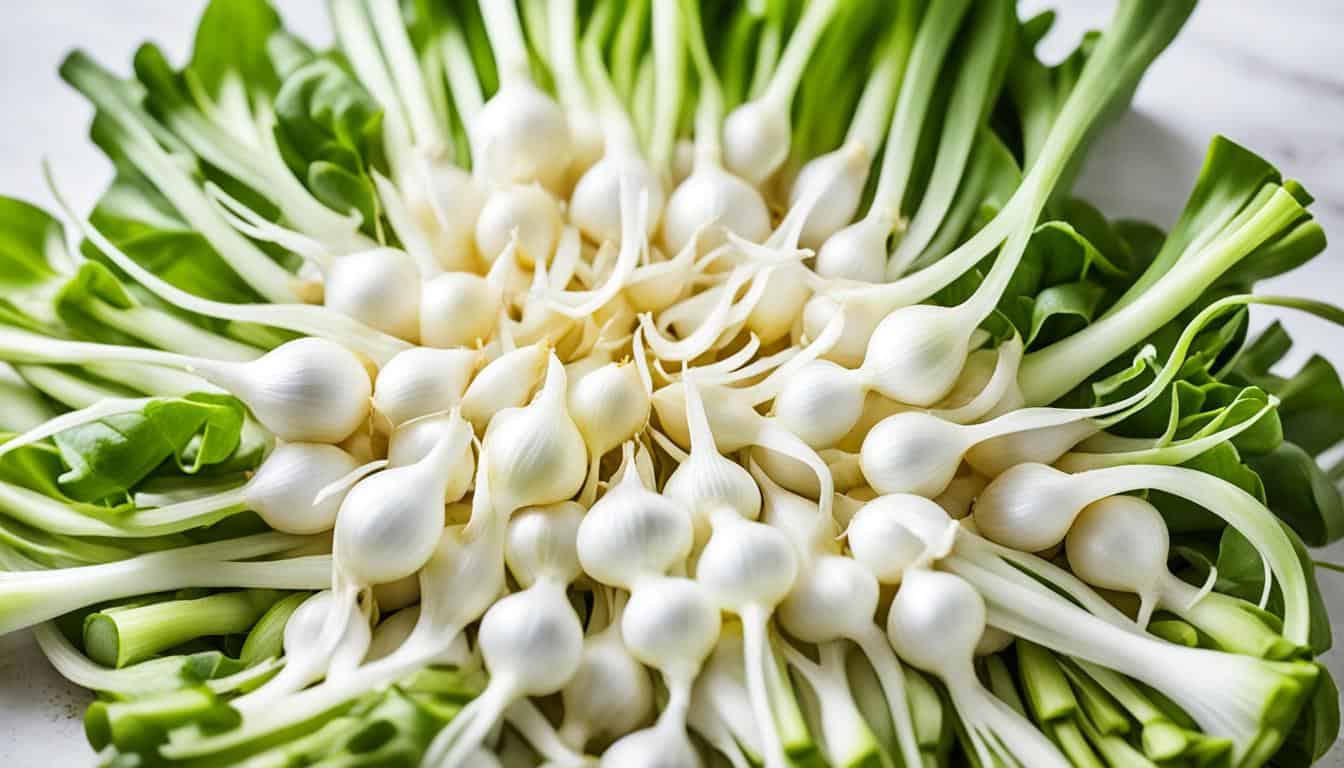
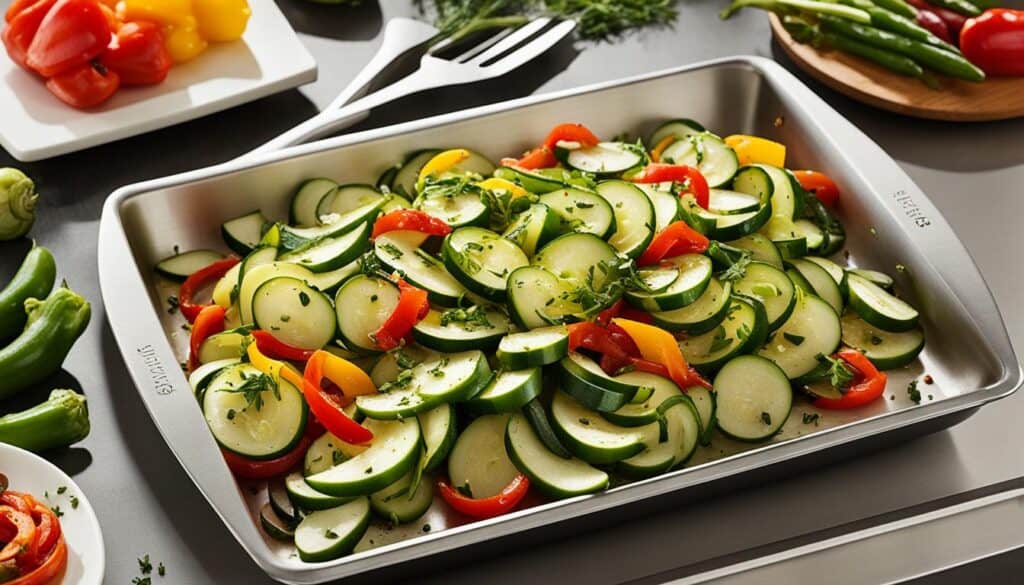
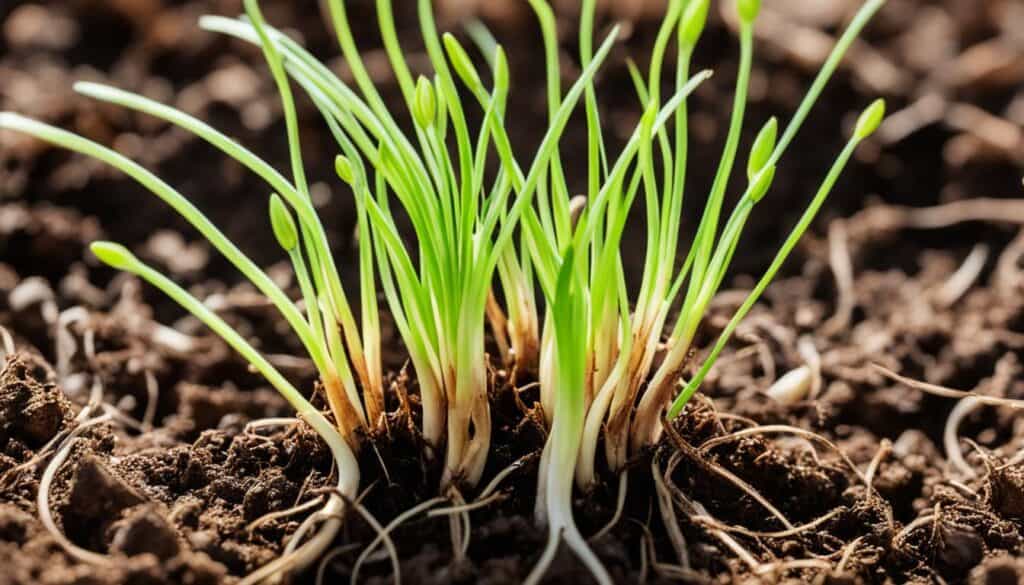
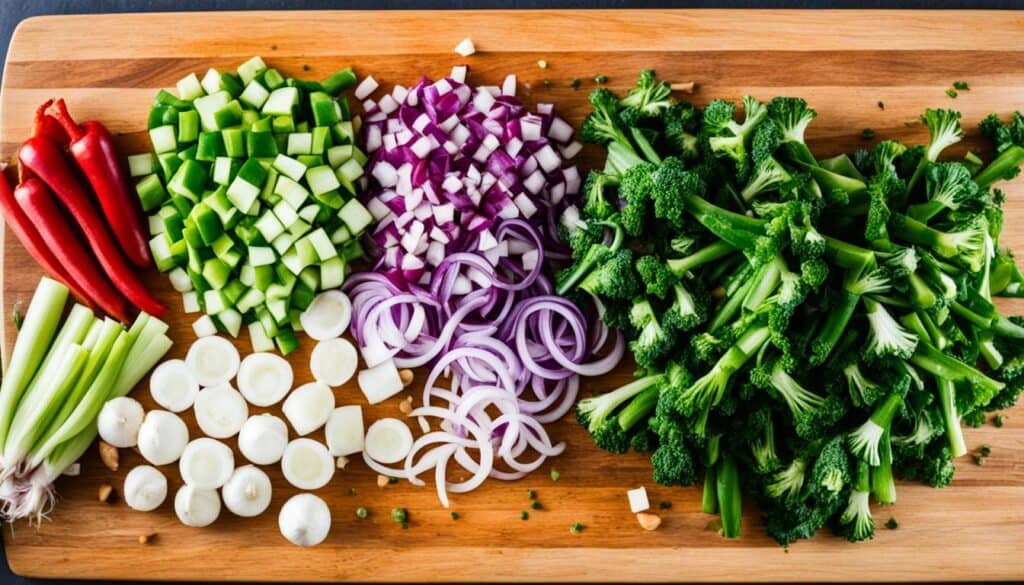
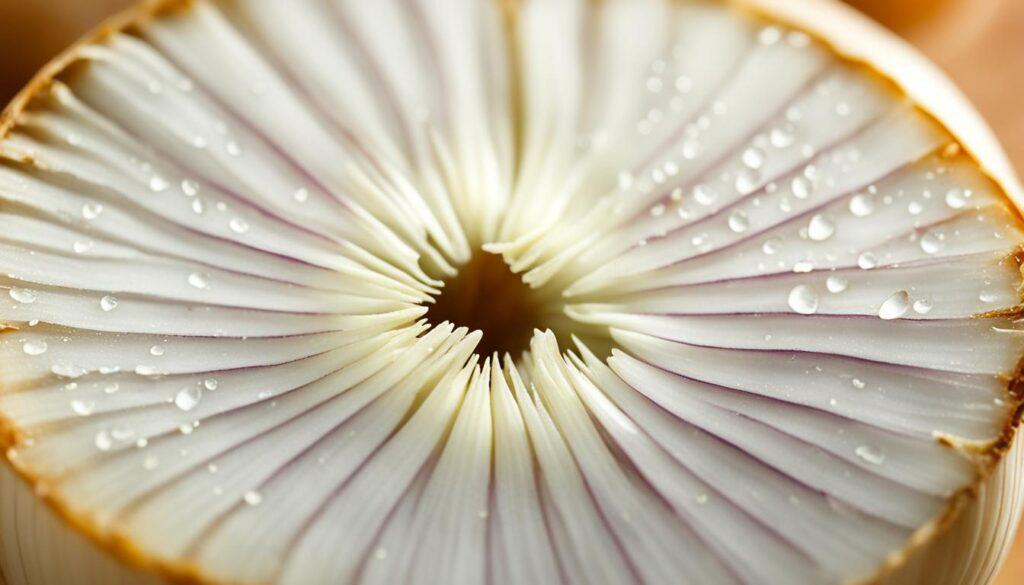
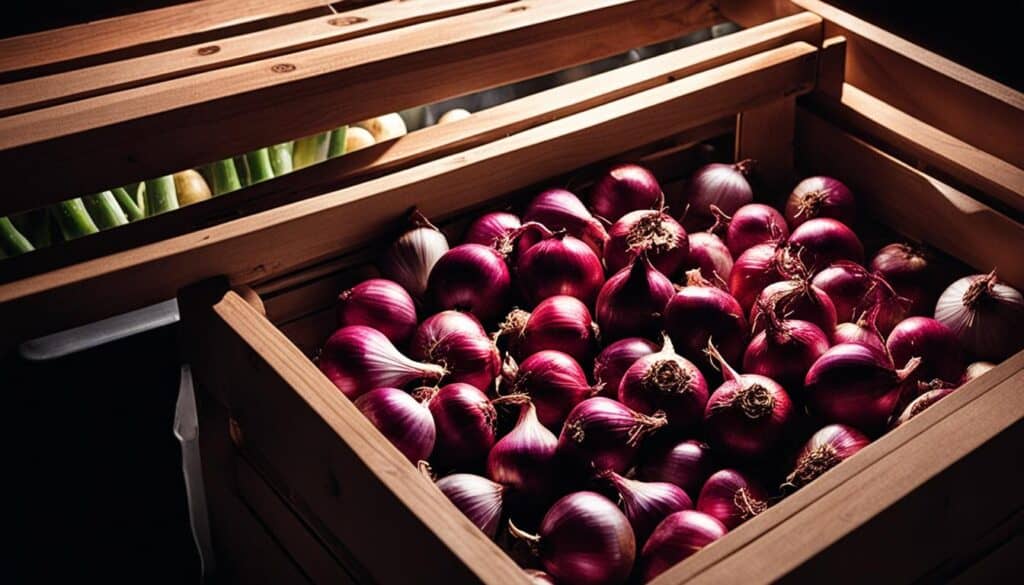



Leave a Reply